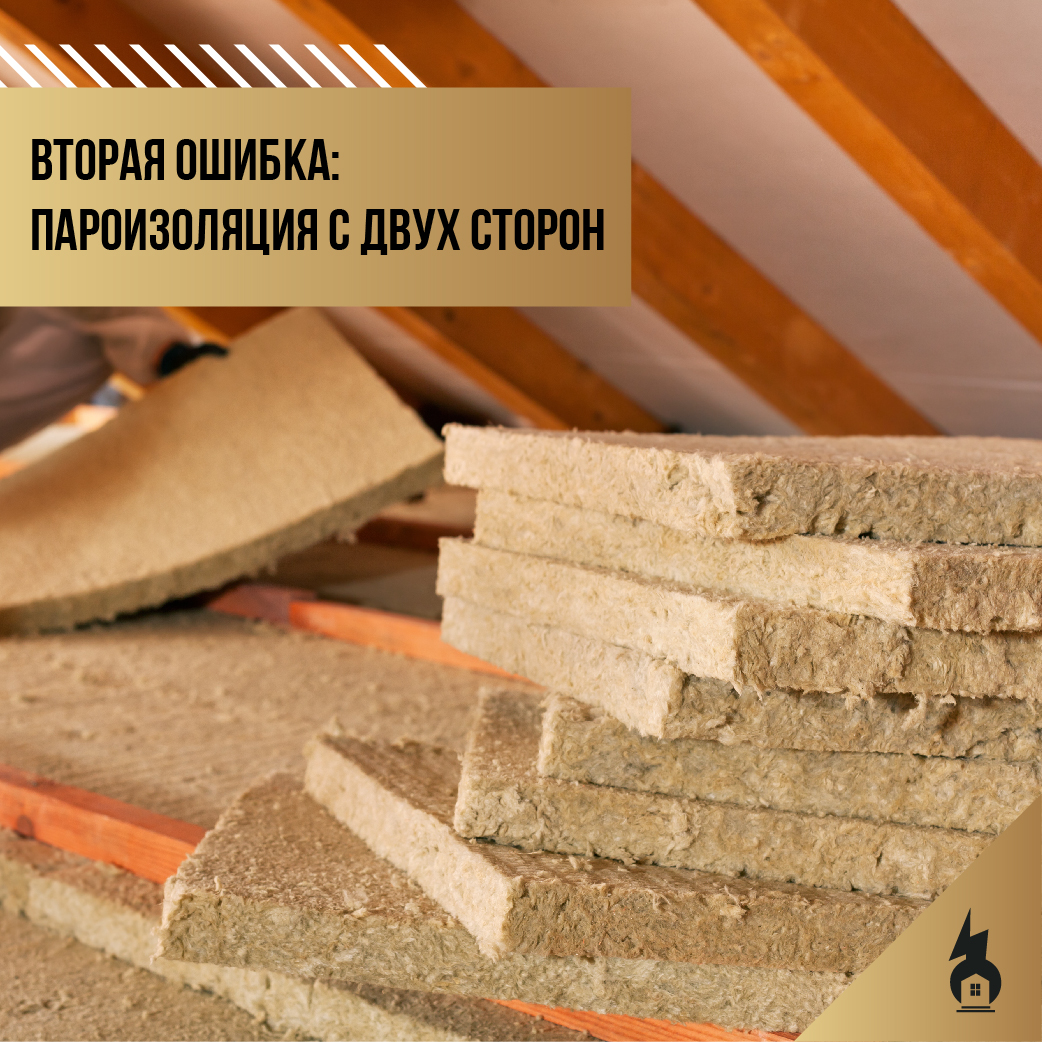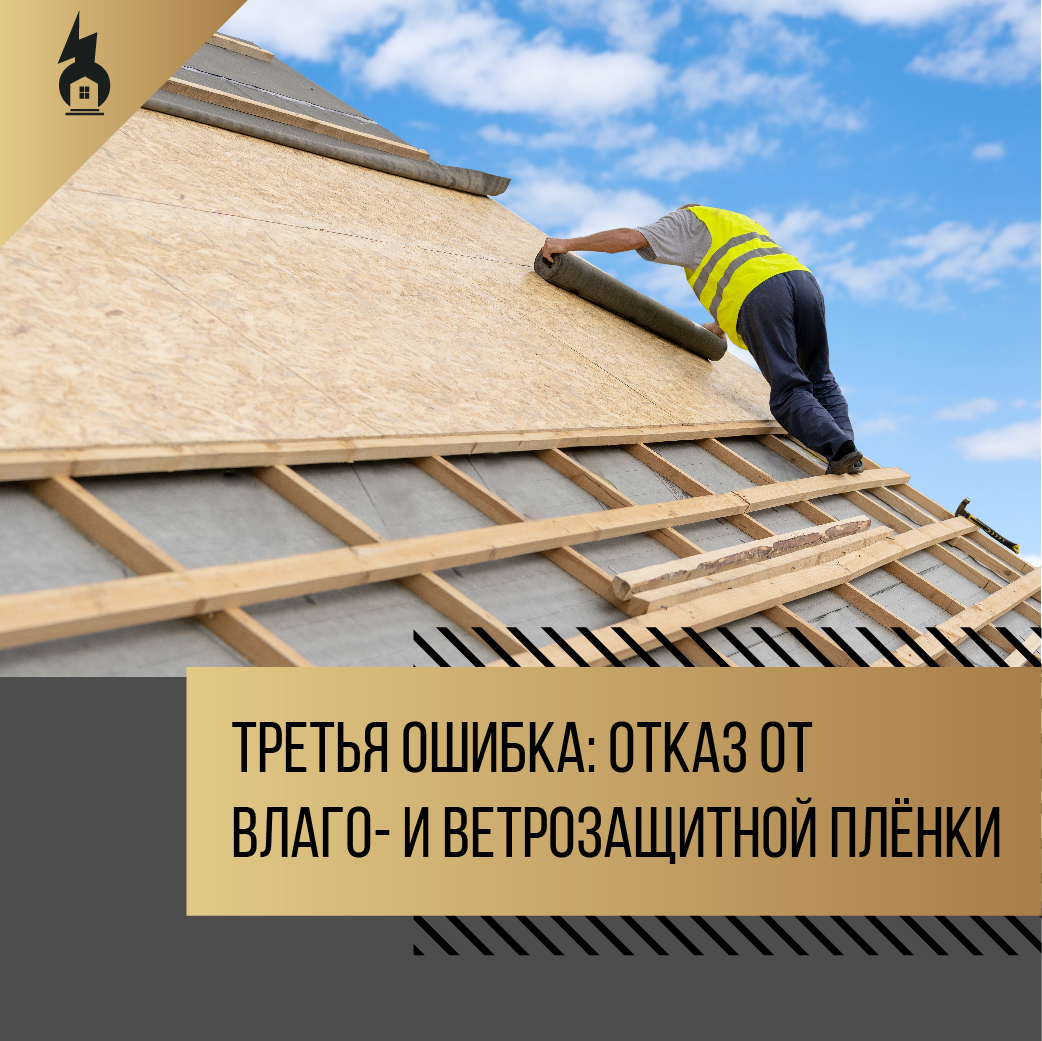The second mistake is that the vapor barrier was laid on both sides of the insulation and the wooden floor ⠀
⠀
How to vaporize a wooden floor in a wooden and frame house? Immediately, we are talking about the overlap between two residential and constantly heated floors. ⠀
⠀
🗣 On some sites they write that the first layer is laid between the finishing ceiling of the first floor and the draft floor of the second. On others, that on the rough floor and on it immediately insulation. It turns out the vapor barrier will be on both sides? ⠀
⠀
You can’t do this! ⠀
💭 To answer these questions, we reason logically. ⠀
⠀
In frame walls and ceilings, vapor barrier is installed where there is a temperature difference. Those. the room where plus is insulated from the street where it is cold. ⠀
🖇 In the interfloor overlap, between two heated floors, there is no sharp temperature difference. Therefore, water vapor entering the insulation does not condense. ⠀
Hence: mineral wool insulation laid in a wooden floor between the first and second heated floors is rather needed not for thermal insulation of the structure, but for soundproofing the floor. ⠀
That is, in fact, you can do without films, but the living room must be protected from possible particles of insulation in the air. ⠀
But, do not forget that in the house, beside the residents, there are constant sources of moisture and water vapor - a kitchen, a bathroom and a toilet. ⠀
💦 Water vapor, due to the pressure difference, will tend to get from a warm room to a cold zone - through walls to the street, or from bottom to top, to a cold attic through ceilings. Or in the under-roof space, when it comes to the insulated attic. ⠀
We offer such a "pie": ⠀
⠀
🔸Clean and draft ground floor ceiling finish ⠀
🔸Vapor barrier ⠀
🔸 Heater ⠀
🔸 Vapor-permeable diffusion membrane ⠀
🔸 Black and fine finishing of the floor of the second floor ⠀
⠀
In addition to the classic work in the “pie” of overlapping, the films will not let the insulation dust. ⠀
With this arrangement, water vapor will freely come out of the ceiling and the structure will “breathe.” ⠀
⠀
⚠ Important! Do not lay vapor barrier on both sides of the insulated wooden flooring. ⠀




 By clicking the "Leave a request" button, you consent to the processing of your personal data and agree to our privacy policy.
By clicking the "Leave a request" button, you consent to the processing of your personal data and agree to our privacy policy.